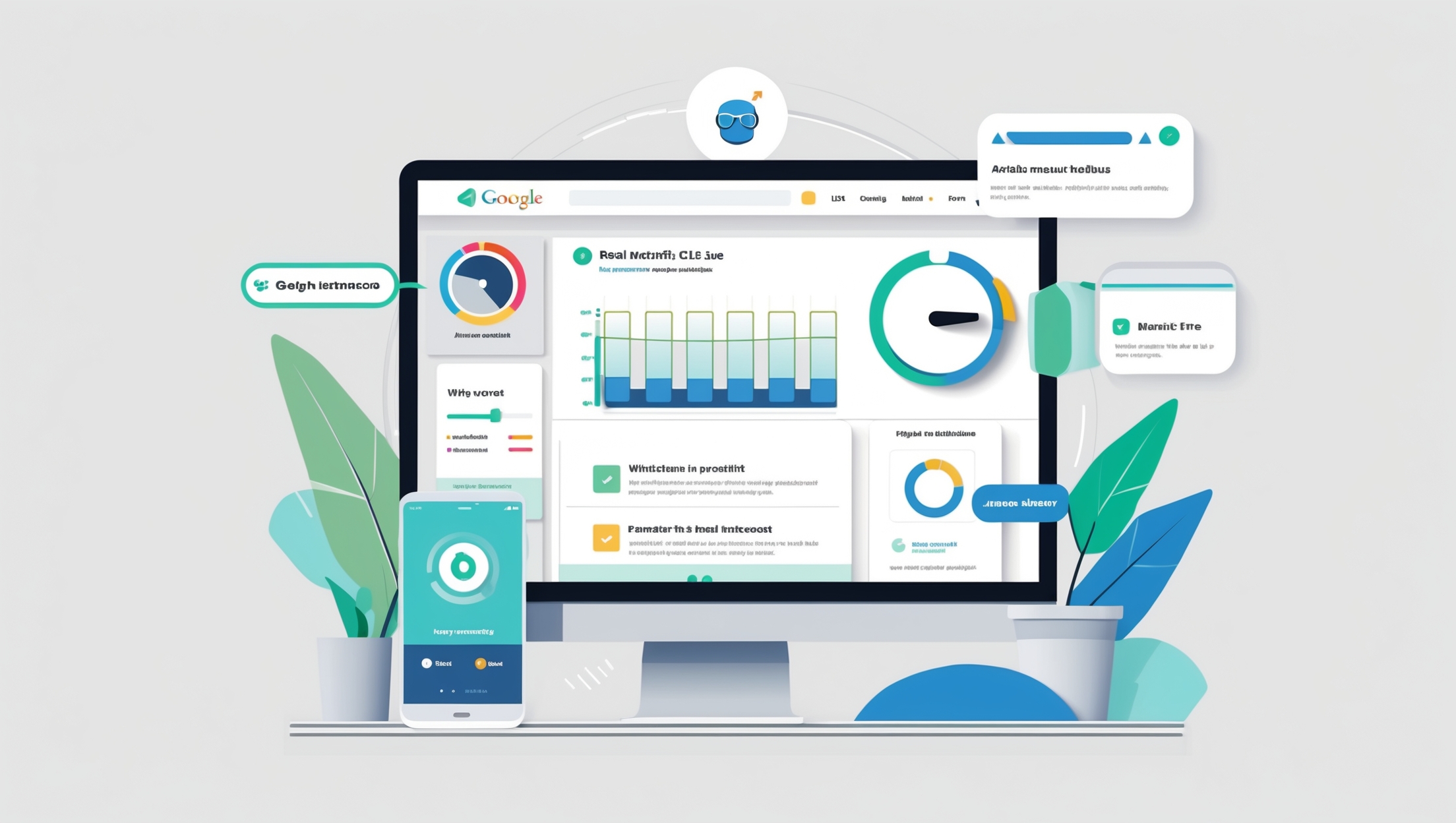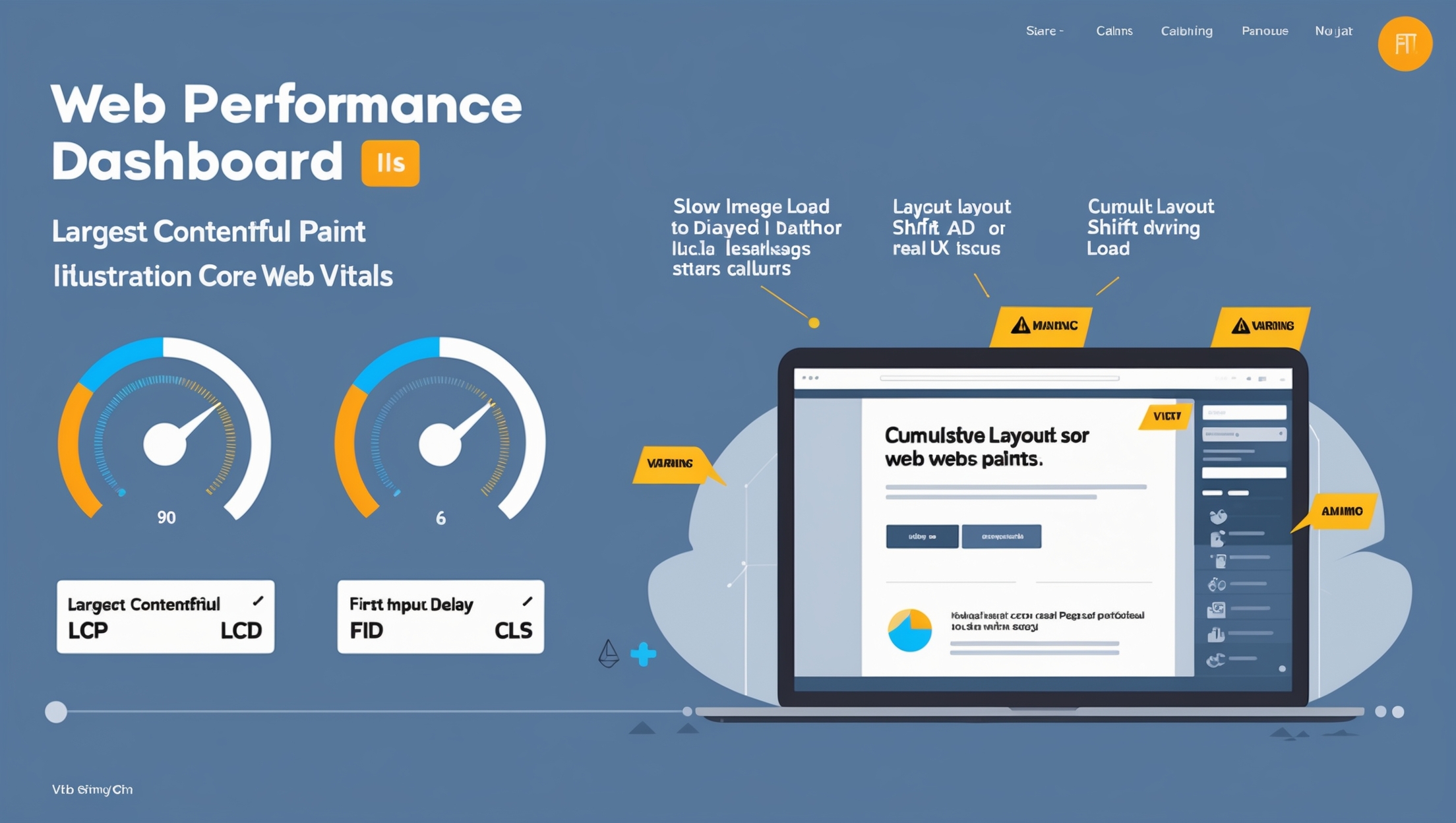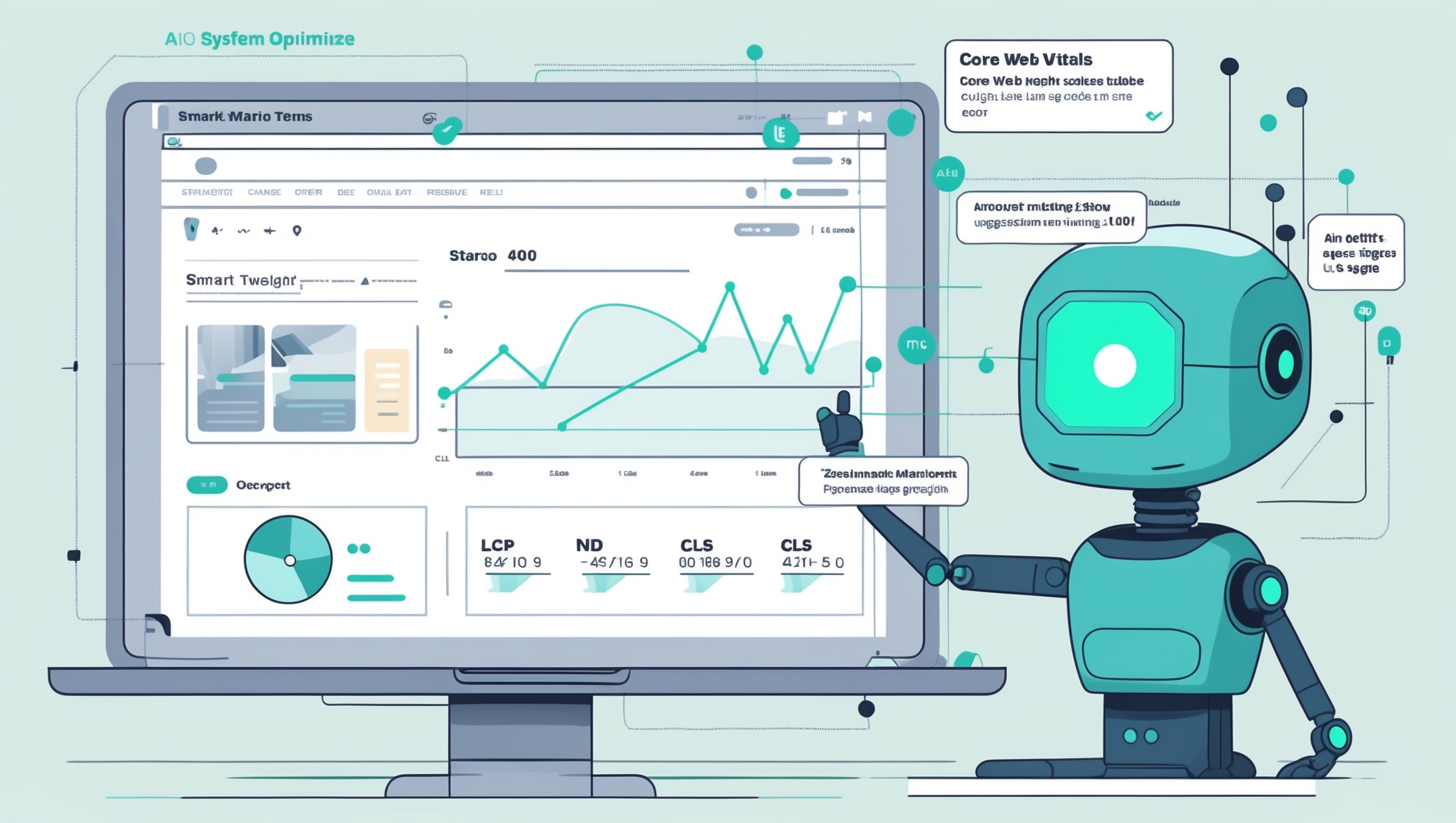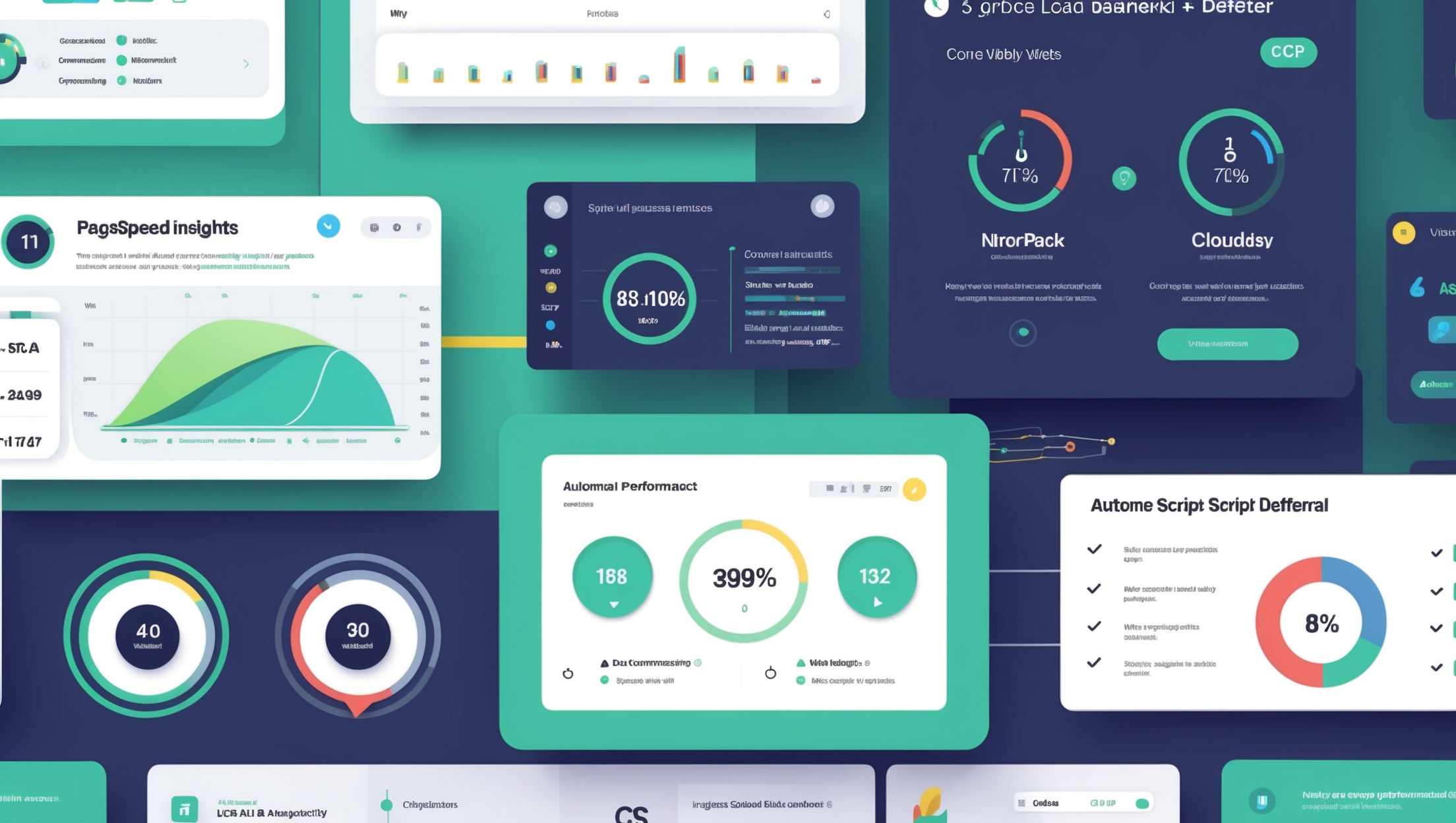The Role of AI in Core Web Vitals Optimization

Google's Core Web Vitals aren’t just technical benchmarks—they're real performance signals that influence rankings and user experience. As optimization gets more complex, more teams are turning to AI in Core Web Vitals Optimization to stay ahead of the curve.
From web vitals automation to AI-driven insights, machine learning is changing how we approach site speed, layout stability, and responsiveness. Instead of manually testing every asset and script, AI can predict, diagnose, and even resolve performance issues before they impact real users.
Modern AI technical SEO tools don’t just flag slow-loading elements—they prioritize them by impact and suggest precise improvements. Combined with natural language processing SEO, these tools also ensure your content structure and semantic clarity align with performance best practices.
Whether it’s image compression, lazy loading, or smart rendering, the latest page speed AI tools bring speed and intelligence to performance audits. The result? Better scores, happier users, and a competitive edge in the SERPs.
Understanding Core Web Vitals and Their Challenges

Core Web Vitals measure three key aspects of real-world user experience: loading performance, interactivity, and visual stability. Google uses these metrics—Largest Contentful Paint (LCP), First Input Delay (FID), and Cumulative Layout Shift (CLS)—to determine whether a page provides a smooth and responsive experience.
LCP (Largest Contentful Paint) – The Loading Bottleneck
LCP evaluates how quickly the largest visible element on your page loads—usually a banner, hero image, or large text block. Slow LCP often results from render-blocking scripts, slow server responses, or unoptimized media.
Optimizing LCP with AI involves dynamic resource prioritization, real-time compression, and lazy-loading elements based on device and connection type. AI can also detect layout shifts that delay perceived loading and automatically suggest solutions.
FID (First Input Delay) – Measuring Responsiveness
FID tracks the time between a user’s first interaction (like a click or tap) and when the browser can respond. It’s largely impacted by JavaScript execution and main-thread blocking tasks.
Improving FID using artificial intelligence is now possible with tools that diagnose thread-blocking scripts, segment them intelligently, and defer non-critical code. Some AI models even test and simulate interaction latency across devices to surface critical bottlenecks.
CLS (Cumulative Layout Shift) – Stability in Motion
CLS measures how visually stable your page is while it loads. Common culprits include fonts swapping late, images without fixed dimensions, or dynamic ads causing sudden shifts.
With CLS optimization AI, systems can pre-load layout predictions, inject fallback space for late assets, and flag instability before it hits production. These models learn over time and provide more precise fixes than manual testing ever could.
Traditional tools often rely solely on lab metrics, but AI shines in field data optimization with AI, drawing on real-world user behavior to make smarter decisions. Instead of testing one device on one connection, AI aggregates performance insights across millions of pageviews.
Understanding these challenges is step one. Applying AI solutions to solve them is where the real transformation begins.
How AI Is Applied to Web Performance Optimization

When it comes to performance tuning, AI in Core Web Vitals Optimization brings scale, speed, and real-time adaptability. AI doesn’t just monitor your metrics—it learns from them and evolves the optimization process.
Real-Time Decision Making
Traditional audits give you static snapshots, but AI can analyze and act on performance data continuously. That means your website is always learning from users and adjusting accordingly.
This level of web vitals automation enables tools to detect sudden drops in LCP or spikes in CLS and push alerts or fixes in real-time. Instead of finding problems days later, AI helps fix them while they’re still minor.
Predictive Analysis and Proactive Fixes
AI models trained on thousands of performance issues can now predict which elements might break Core Web Vitals before you publish them. This is where predictive loading AI excels—by prioritizing critical content and delaying non-essential scripts based on likelihood of user interaction.
If your site relies heavily on media or third-party scripts, predictive tools can preload, lazy-load, or defer assets without human input. This proactive approach keeps performance stable without constant intervention.
Pattern Recognition and Optimization Suggestions
AI website performance tools don’t just spot isolated issues—they identify trends in your code, asset handling, and rendering behavior. If certain components regularly cause layout shifts or poor interactivity, AI learns that pattern and flags it immediately.
These tools also generate actionable suggestions. Instead of just saying “optimize this image,” AI can tell you which format, dimensions, and delivery method will yield the best result.
Using Real-World Data at Scale
Unlike lab-based simulations, field data optimization with AI gathers insights from real users across devices, networks, and geographies. That means decisions are based on how your site performs in the wild, not in perfect test conditions.
This allows AI to adjust optimization tactics in real time—whether it’s shifting load priority based on mobile conditions or reordering elements for faster interaction. As user expectations evolve, your optimization strategies evolve with them.
AI doesn’t just make performance improvements possible—it makes them continuous and contextual. That’s why its role in Core Web Vitals is no longer optional—it’s essential.
Tools Using AI for Core Web Vitals Optimization

There’s no shortage of performance tools out there, but only a few offer real AI in Core Web Vitals Optimization features. These platforms don’t just analyze—they learn, adapt, and even act on your behalf.
Let’s start with NitroPack, one of the most widely adopted page speed AI tools. It uses AI to automatically compress images, lazy-load resources, minify files, and reorder critical assets—without needing a developer to intervene.
Another solid option is Cloudflare, which has introduced smart rendering adjustments as part of its optimization pipeline. Through AI-enhanced routing and adaptive CDN behavior, it optimizes delivery speed and stability based on visitor geography and device type.
Trellis, built by Mediavine, is purpose-built for content-heavy websites and advertising environments. It uses AI to handle complex render timings, dynamically adjust ad loads, and drastically reduce layout shifts—perfect for CLS optimization AI in real-world publishing environments.
WebPageTest offers AI-powered site audits when paired with machine learning plugins or Chrome extensions. These audits simulate changes and recommend improvements across LCP, FID, and CLS before deployment, based on performance benchmarks from top competitors.
For those who work inside Google’s own toolset, Lighthouse AI integration is becoming more accessible via custom implementations or open-source contributions. Some advanced setups even pull Lighthouse data into ML pipelines that train predictive models for future performance.
Other tools worth exploring include:
- DebugBear – Monitors real-user metrics with AI-driven alerts
- PerfPerfPerf – Focuses on FID improvements using intelligent script splitting
- Frase + Surfer SEO – While known for content, both include performance scoring features tied to user experience signals
The best part about these tools? They don’t just give you a score—they give you a solution. And most importantly, they help prioritize which fixes will move the needle most.
As more SEOs and developers embrace AI-powered workflows, these platforms will become essential not just for diagnosing Core Web Vitals issues—but for maintaining a high-performing, user-first site year-round.
AI for Mobile Web Vitals Optimization
With mobile traffic dominating the web, AI in Core Web Vitals Optimization must be tailored for smaller screens and slower networks. Mobile optimization isn’t just about responsive design—it’s about performance precision at scale.
Traditional tools often overlook the unpredictability of mobile user behavior. That’s where mobile SEO optimization with AI comes in—automating asset delivery, script management, and layout priorities based on device type and bandwidth.
One major benefit of AI is its ability to deliver intelligent UX improvements without compromising speed. It can identify when animations slow down interaction or when fonts load late and shift layouts.
AI models monitor tap targets, scrolling friction, and interaction delays to optimize mobile-first design in real time. This leads to faster First Input Delay (FID) resolution and improved user engagement on touch devices.
In many cases, AI solutions apply smart rendering adjustments that reorder HTML, defer heavy assets, or restructure page elements dynamically. These enhancements ensure the most critical content appears instantly—no matter how slow the connection.
For example, if your hero image slows LCP on mobile, AI tools can compress, resize, or lazy-load the asset differently than on desktop. It adapts content delivery to the user context, improving performance without sacrificing brand experience.
AI in site speed analysis takes this a step further by aggregating performance data across mobile devices and uncovering hidden bottlenecks. Instead of testing on a single iPhone or Android simulator, AI analyzes thousands of real-world sessions.
This mobile-first feedback loop is where AI really shines. It closes the gap between lab results and live experience, helping you pass Core Web Vitals tests for your actual audience—not just your test environment.
Whether you're running a blog, SaaS platform, or ecommerce store, mobile speed matters—and AI makes optimizing for it faster, smarter, and far more scalable.
Real-World Use Cases and Results
While theory is great, seeing AI in Core Web Vitals Optimization in action is what really brings it to life. Across industries, teams are using AI to fix long-standing performance issues—and the results are often dramatic.
A publishing company using AI-based front-end performance tuning saw their CLS score jump from 65 to 98 in just three weeks. By letting AI restructure content blocks, preload fonts, and time ad rendering more intelligently, they cut layout shift nearly to zero.
Another example comes from an ecommerce brand struggling with mobile speed. They implemented predictive loading AI that prioritized product images only when in view, which improved their LCP by 47% across their top-selling category pages.
A SaaS company working with millions of dashboards integrated AI technical SEO tools to optimize HTML structure and JavaScript sequencing. Over a two-month period, their FID dropped below 100ms for 90% of users—earning them the "Good" badge across all Core Web Vitals.
For content creators, one standout case was a blog network using AI to dynamically load hero images and sticky navigation bars based on user scroll behavior. This approach focused on reducing layout shift with AI and helped them pass CLS audits without reducing interactivity.
Even a fintech startup with minimal dev resources improved CWV scores by connecting their CMS to an AI-driven optimization layer. This system performed real-time compression, asset inlining, and deferral—giving them Lighthouse scores consistently above 90.
The common thread across all of these examples? AI didn’t just improve one metric—it enhanced the full user experience. From faster paint times to smoother navigation and fewer interruptions, machine learning tools helped teams shift from reactive to proactive performance strategies.
These stories aren’t exceptions anymore—they’re becoming the standard. If you're still relying on manual audits and guesswork, you're leaving performance (and traffic) on the table.
The Future of AI in Web Vitals and Page Experience
The future of AI in Core Web Vitals Optimization isn’t just about faster load times—it’s about creating smarter, more adaptive digital experiences. As Google continues to evolve its algorithm, AI will become central to delivering performance, usability, and compliance at scale.
We’re already seeing AI for page experience updates built into some developer platforms and content delivery networks. These systems learn from thousands of user sessions and automatically re-prioritize what loads first, which scripts run, and how layouts adapt across devices.
Tomorrow’s AI won’t just react—it will anticipate. It will forecast performance issues before they surface, rewrite rendering logic in real time, and customize UX elements based on device, network, or even behavioral patterns.
SEO automation tools will go from reporting tools to active participants in optimization. They’ll flag weak pages and offer instant improvements based on predictive models—removing the guesswork entirely.
Even small business websites will be able to tap into these capabilities. With drag-and-drop AI technical SEO tools, teams can implement smart performance fixes without touching code or hiring developers.
Expect broader integration of web vitals automation directly into CMS platforms, design tools, and cloud infrastructure. Performance will become part of the build process—not just something you measure afterward.
As generative AI continues to grow, site templates could auto-optimize themselves for Core Web Vitals using past performance data. AI could even A/B test structural changes, prefetch winning combinations, and push them live without human intervention.
These innovations mean you won’t just meet Google's standards—you’ll exceed them. The next frontier is not just fast pages, but intelligent pages that evolve with every visitor.
If you're future-focused, the message is clear: AI won’t replace SEOs or developers—it will empower them to deliver faster, smarter, and more resilient user experiences than ever before.
Getting Started with AI-Powered Web Vitals Tools
If you’re ready to explore AI in Core Web Vitals Optimization, the good news is you don’t need to be a developer to get started. AI-powered tools are more accessible than ever and built to work within your existing workflow.
The first step is to benchmark your current performance. Use PageSpeed Insights, WebPageTest, or tools with AI-powered site audits to get a baseline for your LCP, FID, and CLS metrics across mobile and desktop.
Next, explore platforms that offer web vitals automation—tools like NitroPack, Cloudflare, or Trellis. These can optimize media delivery, script execution, and asset prioritization without manual code edits.
Pair these with AI-powered SEO insights tools like Surfer SEO or Frase, which help balance content relevance with user experience metrics. The goal is not just faster pages—but smarter ones that engage and retain visitors.
You should also consider AI technical SEO tools that specialize in diagnosing deeper issues like JavaScript bloat or delayed layout rendering. Tools like DebugBear or Semrush Site Audit (with ML extensions) offer detailed technical fixes backed by real user data.
Start small with a few high-traffic pages or templates. Apply automated suggestions and monitor changes in your Core Web Vitals scores, then scale across your site once you see measurable gains.
If you’re working in WordPress, look for AI-friendly plugins that integrate with your caching or CDN setup. These often offer one-click optimization that improves scores without sacrificing design or interactivity.
Finally, make performance testing a habit—not a one-time event. Set up scheduled audits and AI-driven alerts to track changes over time and adapt as needed.
With the right tools, you’ll spend less time guessing and more time improving what matters: speed, stability, and seamless user experience. AI makes it possible—now it’s your turn to make it a priority.
FAQs: AI and Core Web Vitals
1. How does AI improve Core Web Vitals?
AI improves Core Web Vitals by analyzing user behavior, detecting performance bottlenecks, and automating code adjustments. It helps optimize LCP, FID, and CLS with real-time feedback and learning models.
2. Do I need coding skills to use AI tools for optimization?
Not at all. Many AI technical SEO tools and AI-powered site audits are built for marketers and SEOs with no development background.
3. What’s the difference between field data and lab data in optimization?
Lab data comes from controlled tests, while field data reflects real-world user experiences. AI in Core Web Vitals Optimization is most effective when trained on both types of data.
4. Can AI improve mobile performance scores?
Yes—especially with tools designed for mobile SEO optimization with AI. These platforms tailor asset delivery, layout stability, and script execution specifically for mobile users.
5. Are there free AI tools for Core Web Vitals?
While many AI tools are paid, some offer free tiers or trials. Look for platforms like PageSpeed Insights integrations, NitroPack, or Cloudflare with smart routing features.
Conclusion
AI in Core Web Vitals Optimization is no longer a futuristic concept—it’s a current necessity for competitive SEO. With Google raising the bar on user experience, speed, and stability, AI makes it easier to meet and exceed those expectations.
From AI-powered SEO insights to web vitals automation, modern tools help teams detect issues early, act faster, and scale smarter. Whether you're running a blog, a brand, or a full ecommerce platform, AI can give you a measurable edge.
The best part? You don’t need to understand the math behind machine learning—you just need to use the right tools consistently. Embrace the future, and let AI help you build a faster, more stable, and higher-ranking website.

